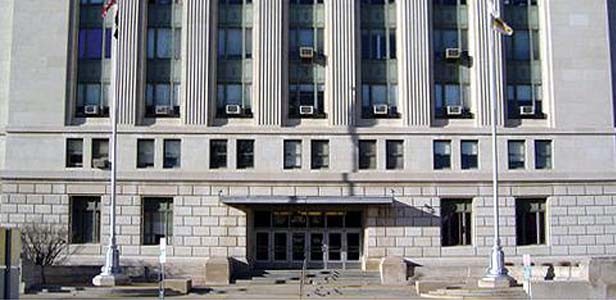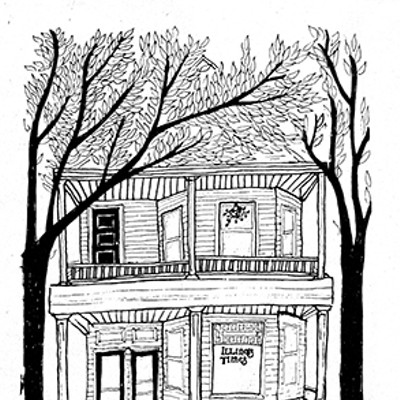One is always saddened to see an old friend left helpless in the hands of fate, even if that friend fills half a city block. As did so many of my generation, I spent dozens of happy hours at the Illinois State Armory at Second and Monroe during my youth. The building was constructed in 1936 to replace the one built to house a state militia force in 1902, when officialdom feared that angry citizens might attack the seat of government with more than votes.
As befitted its martial purpose, the building was equipped with an indoor mustering and parade ground cunningly disguised as a gymnasium. This was overlooked by a mezzanine and a massive stage that a Mussolini would have considered a becoming place for a rainy-day rally. In the latter 1950s and ’60s you never knew when a dignitary would blow through town and want a parade, and the men of the Illinois National Guard’s 33rd Infantry Division, based at the Armory, marched there once a week in formation, to keep sharp.
That space made the Armory Springfield’s all-purpose venue for any activity that couldn’t fit into a hotel room — our Coliseum, our Radio City Music Hall, our McCormick Place. I graduated from high school there and gawked at new cars there. I learned there what circus elephants smelled like and gaped admiringly at giants of a different kind when all-state high school basketball players — our era’s gladiators — gathered there for state boys super-sectional and city tournaments. My preteen self thrilled there when Gail Davis (TV’s Annie Oakley) shot cigarettes out of the mouth of an assistant; she wore chaps and toted six guns and left me with expectations of girls that would be forever disappointed.
Music figured prominently in the after-hours life of the building. Until the Prairie Capital Convention Center was built it was the only place in town to hear second-rate rock ’n’ roll. I heard Connie Francis sing there, and Dicky Doo and the Don’ts. The joint hosted one first-rate band on a fourth-rate tour — the Kinks’ disastrous U.S. tour, in 1966 — but the most famous performances at the Armory didn’t happen. I refer of course to the 1959 Winter Dance Party Tour of Buddy Holly, Richie Valens and the Big Bopper, all of whom were fated to die in a plane wreck two weeks before the gig.
Happily for the rest of us, the State of Illinois these days has more need for bureaucrats than it does for soldiers, and the Armory hasn’t served much of a military purpose for some time. The auditorium remains useful for ceremonial purposes, but the circuses and concerts and exhibitions and ball games have long since decamped to other facilities. In the past 20 years the Armory has been starved of maintenance, and today is on life support, past dignity and, apparently, hope. The City of Springfield officially recognizes it as the landmark it is, but to the state it is a headache. Plainly there is no point to restoring it as an arsenal. What then might a reborn Armory add to the Capitol complex?
Most visitors to the Statehouse complex leave no more wise about how government works than when they arrived. Why not convert the Armory into a state government version of the Abraham Lincoln Presidential Museum and Library, a place where history and government are turned into electronic vaudeville? It isn’t hard to imagine a Hall of Smoke and Mirrors, devoted to the budget process. Or a political planetarium, in which visitors would gaze up at simulated heavens to note the current relative positions of the celestial bodies in power relationships. Perfect for visiting schoolkids, and out-of-town journalists.
More seriously, the Capitol complex is singularly lacking in tourist amenities. The area could use a food court of the sort that has proved so popular at the Thompson Center in Chicago; what more fitting spot for one than the old Armory basketball court? The office sections of the building could be converted into a boutique hotel for visitors for whom the charms of franchise hostelries have paled.
More fertile imaginations than mine will have other and better ideas. Thinking up a new future for the building will not be the challenge that realizing them will be. Converting special-purpose buildings for new uses is by now an evolved art in the U.S. but not among the agencies responsible for managing State of Illinois properties in Springfield. The state’s idea of adaptive reuse is turning stone and steel into asphalt. Is the state capable of pulling off such a project? In short, state capital development isn’t. That’s why the job should be put in experienced private hands. A building erected to protect state officials from private citizens now needs private citizens to protect it from state officials.
Contact James Krohe Jr. at [email protected].























